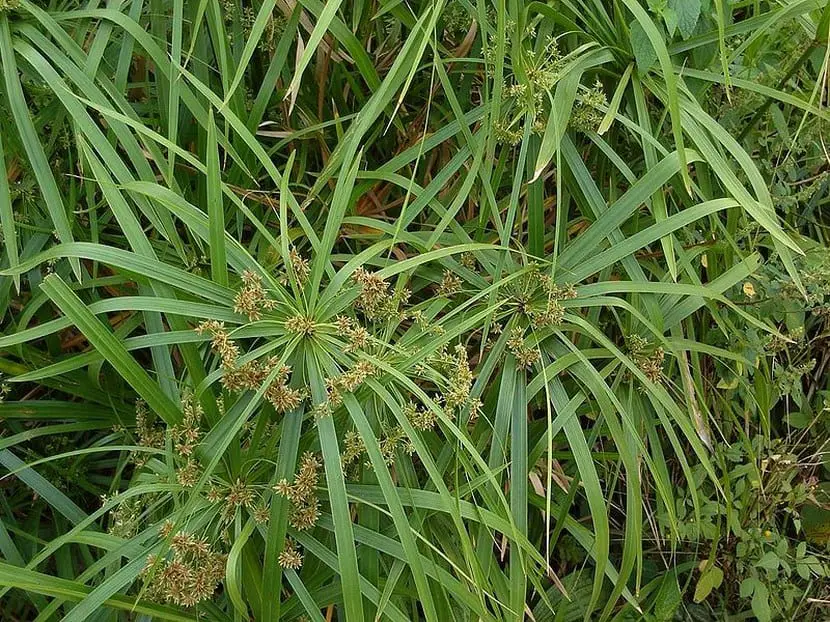
When there is space in the house, there is nothing more beautiful than having a pond. These water mirrors create a unique corner in the garden, especially when surrounded by abundant vegetation.
If you’re pond edge plantscan you think of the call False Papyrus, a grassy plant which is ideal in these cases due to its morphology.
Knowing the false papyrus

The scientific name of the false Papyrus is Cypress alternate leaf-wrapped and it is a plant that belongs to the family Cyperaceaea genus to which more than 600 species belong, being the Papyri the best known.
Papyrus grows naturally in humid places in many parts of the world and that is why this variety adapts very well to the edges of ponds.
In the case of the false papyrus, the plant is native to Madagascar and is a perennial species It occurs in clumps and has long, thin leaves with long petioles. The leaves are the main attraction of the plant because the flowers are small, white and not very showy.
Plant care

The fake papyrus it adapts very well to all types of soils, even those that are too humid or with puddles, another reason why the plant is ideal to live next to ponds and other water bodies. It also adapts very well to different climates although it does not tolerate frosts, especially if they are very intense.
Ideally, the plant is in partial shade although it can resist sun exposure.
If you want to grow the false papyrus you can do it directly in the ground or in pots, although in these cases it is best to place a plate under the pot so that the plant has water available at all times. If you decide to plant it in the ground, you can do it next to a water mirror or submerged in it.
